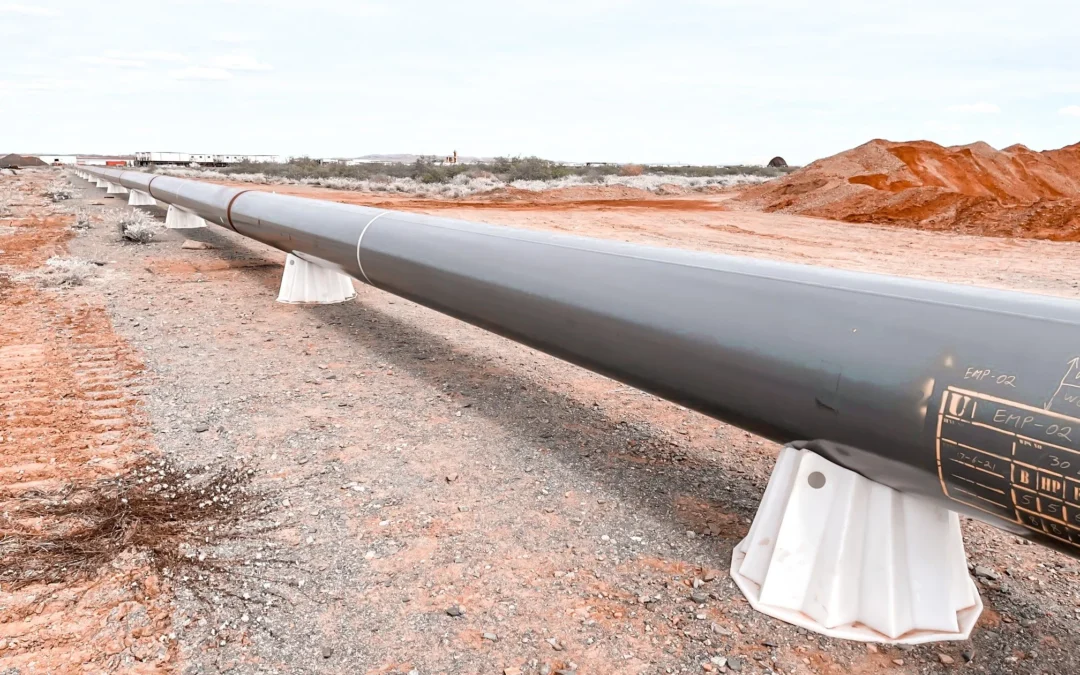There’s a small, bright cone sitting in the corner of nearly every pipe crew’s truck — unassuming, lightweight, and easy to stack. For anyone who’s spent a winter hauling 4×4 cribbing, nudging rusty steel stands into place, or wrestling with bulky supports in the mud, that little cone feels like a small miracle. Stackable plastic pipe stands started out as a practical alternative and have steadily earned their place on jobsites across oil & gas, municipal work, and fabrication shops because they solve several everyday headaches at once.
At first glance the appeal is obvious: these stands are made from engineered plastics such as UV-stabilized HDPE, which keeps them light enough for one person to move but tough enough to handle heavy pipe loads. Manufacturers commonly rate even smaller stands in the 3,000–4,000 lb range and large, heavy-duty plastic stands can be rated to 15,000 lb with conservative safety factors. That combination — low weight and high rated capacity — explains why crews swap bulky timber cribbing and awkward steel supports for plastic cones that can be stacked in the back of a truck and carried by hand.
The savings aren’t just about lifting fewer pounds. Stackable designs drastically reduce freight and storage costs: because they nest, you can ship and store far more stands per pallet than you could with timber or single-piece metal supports. That makes a real difference when you’re moving material between yards, staging for a long spread, or exporting gear — every pallet-space you reclaim reduces handling time and transport cost.
But the practical benefits are only half the story. On the jobsite, safety and cleanliness matter. Plastic stands eliminate many of the nuisance hazards associated with wood cribbing and weathered steel: no splinters, no rust, and no nails or sharp metal edges to catch gloves. They’re chemically inert, so they won’t react with coating residues or cause staining, and the rounded saddle design helps cradle pipe without creating pressure points that can damage coatings during fabrication or inspection. For welders and fitters who move stands dozens of times a day, that reduced risk of hand injuries and coating damage adds up.
Durability is another surprise to many who first consider plastic. Modern HDPE stands are UV-stabilized and formulated for a long service life in harsh conditions. Product literature commonly lists usable temperature ranges that cover typical field environments, plus a pragmatic lifespan estimate so supervisors can plan replacements rather than react to sudden failures. Those specs — rated load, safety factor, and UV/service life — also make it easier for owners to build safe procedures and include the stands in equipment inventories with confidence.
There’s also an operational rhythm to using stackable plastic pipe stands that crews appreciate. Instead of building and tearing down stacks of timber, you set a cone, seat the pipe, roll it into place and move on. The stands are intentionally shaped to be stable on uneven ground, and many suppliers date-stamp or serial-stamp each unit so you can track inspection cycles and life-expectancy across seasons. Those little touches — convenience, traceability, predictable replacement intervals — are the kind of things that keep projects on schedule and paperwork tidy.
Like any tool, they’re not a one-size-fits-all magic wand. For extreme temperatures, point loads, or engineered scaffolding applications you’ll still look to steel, engineered cradles, or purpose-designed supports. But for everyday pipe handling, welding setups, trench support staging, and storage, plastic stands hit a practical sweet spot: low cost of handling, reasonable strength, and greater safety for the crew. Many pipeline and fabrication outfits now specify plastic stands as standard issue precisely because they reduce manual handling and the associated risk of injury — and because they make jobsite logistics simpler.
If you’re writing procurement specs or advising a site superintendent, remember to check the rated working load and the manufacturer’s recommended safety factor, the pipe size range the saddle accepts, and any temperature or UV-life guidance in the product data. These are the details that turn a good purchase into a reliable, long-term improvement to workflow.
At the end of the day, stackable plastic pipe stands are a small change that compounds over a project’s lifetime: less time moving heavy supports, fewer damaged coatings, cleaner storage, and simpler logistics. They won’t replace every piece of heavy-duty rigging or engineered support, but they’ve earned their spot on the truck for a reason — they let crews focus on getting pipe fitted, welded, and back in service faster and safer.
Want help choosing the right size or capacity for your operation, or want to add stackable stands to your standard kit list? Tell us the pipe sizes and environment you work in and we’ll recommend options that balance capacity, portability, and service life.


